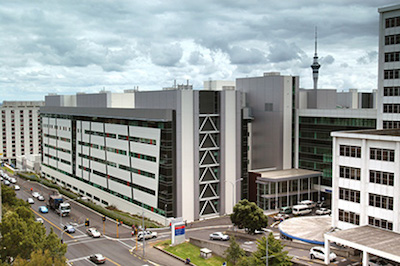
The three district health boards (DHBs) serving the Auckland region are making electronic referrals into their hospitals and health services mandatory from March next year, doing away with faxed and mailed referral letters from GPs, specialists and community allied health providers.
The DHBs – Auckland, Counties Manukau and Waitemata, which together service around 1.5 million people – have been using the CareConnect system from HealthLink for GP referrals for a number of years. More than 95 per cent of GPs referring to the three DHBs use the eReferral system, which is branded as CareConnect in Auckland but is also used by other DHBs in the North Island.
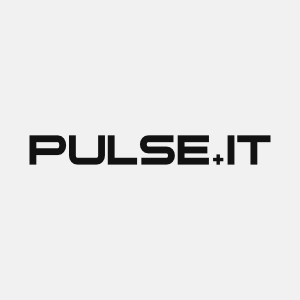
The CIO of the National Blood Authority, Peter O'Halloran, is moving on to take up the reins as CIO of ACT Health, ITnews is reporting.
Mr O'Halloran is best known for overseeing the development and roll out of the BloodNet online blood ordering and inventory management system, which was which first began as a web portal in 2010.
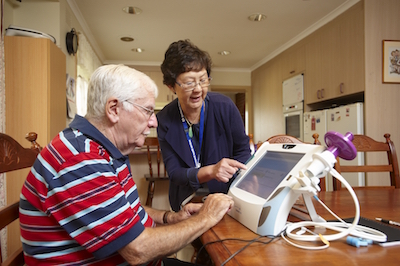
The CSIRO has released its long-awaited report into home monitoring of chronic disease, which shows that a modest investment in home monitoring technology, allied to risk stratification tools and remote monitoring by telehealth nurses, could save the healthcare system up to $3 billion a year in avoidable admissions to hospital, reduced length of stay and fewer demands on primary care.
The report, Home Monitoring of Chronic Disease for Aged Care, is the result of a six-site study funded as part of the Department of Health's $20 million telehealth pilots program, which was originally set up to test the healthcare capabilities of the National Broadband Network (NBN).

Former Sensis director of strategy Rachel de Sain has been appointed as executive general manager for innovation and development with the Australian Digital Health Agency (ADHA).
Ms de Sain, who previously ran her own digital strategy agency called Flaxworks, also did some stints with Healthdirect Australia to develop the My Aged Care and Mindhealthconnect online portals.
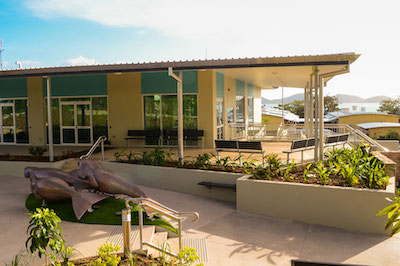
The two northern Queensland hospital and health services have gone to market for a regional eHealth solution that will provide an integrated point-of-care clinical record covering primary, community and acute care settings in the region, over four years after winning federal funding for the project.
The region won $35 million in funding from the former Labor government's Health and Hospitals Fund (HHF) back in 2012 to build an electronic medical record to replace what are still predominantly paper-based processes in the region's numerous remote health centres and small hospitals.
Covering the Cairns and Hinterland Hospital and Health Service (CHHHS) and the Torres and Cape Hospital and Health Service (TCHHS), the new solution will not include the region's major referral facility, Cairns Hospital, which earlier this year went live with the digital hospital release of the state's Cerner integrated electronic medical record (iEMR), but will take in 11 regional hospital-based facilities and 47 primary and community healthcare facilities, some of them extremely remote.


The Department of Human Services (DHS) has completed a trial to streamline the enrolment of newborns for Medicare and the Australian Childhood Immunisation Register using data extracted from a hospital's patient administration system and transferred directly to a DHS online portal.
In what is thought to be an Australian first in linking basic data between a state hospital system and the federal Medicare system, DHS worked with the Digital Transformation Office (DTO) on the project, which took place at the Gold Coast University Hospital between April and July.

Pulse+IT's weekly round-up of international health IT and eHealth news for the week ending August 28:
Digital medicine: empowering both patients and clinicians
The Lancet ~ Eric Topol ~ 20/08/2016
The purpose of this new Lancet column on digital medicine will be to delve into important topics in this emerging field with a focus on the promises and provisos of digital medicine.
Care.data concerns as new platform proposed
Digital Health News ~ Ben Heather ~ 25/08/2016
A proposal for a new platform for the national collection of confidential patient information is under consideration, as concerns continue that elements of the care.data scheme will be resurrected.
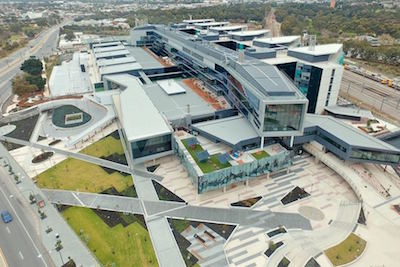
Pulse+IT's weekly round-up of Australian and New Zealand health IT and eHealth news for the week ending August 27:
Legal fight looms over new Royal Adelaide Hospital delay
ABC News ~ Staff writer ~ 26/08/2016
A legal dispute between the South Australian Government and the builder of the new Royal Adelaide Hospital could lead to even more delays in opening the $2.3 billion medical facility.
SA government launches court action over new Royal Adelaide Hospital delays
The Advertiser ~ Brad Crouch ~ 26/08/2016
The State Government will today launch court action against the builders of the new Royal Adelaide Hospital after ongoing delays to the project.

New Zealand is going ahead with its plans for a single national electronic health record (EHR) despite recent upheavals with the now disbanded National Health IT Board, issuing a request for proposal this week for a partner to develop a business case for its implementation.
According to tender documents issued by the Ministry of Health, the government and the health IT sector have completed a draft investment outline and a strategic assessment for the EHR, which will be used to guide the business case.
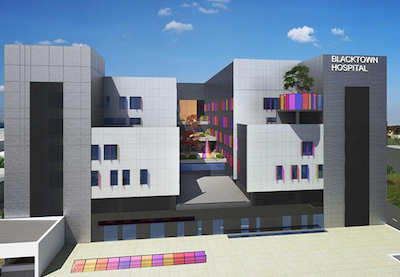
Hospital-based clinicians are being provided with a read-only view of a patient's GP-generated care plan through NSW's Cerner electronic medical record as part of Western Sydney's Integrated Care Demonstrator.
Patients are also set to be encouraged to self-manage their condition through one of several apps being developed by the project, one of three being funded through the NSW government as part of its $120 million Integrated Care strategy.

Medications dose individualisation software developer DoseMe is set to invest in commercialising the product in Australia and integrating it with electronic medical records as it prepares for entry into the US and European markets, following the successful closure of a $2.6 million Series A financing round.
Brisbane-based DoseMe, which was established in 2014 with seed funding from private investor Steve Baxter, is now valued at $20 million after it secured further funding from two local investors, Greg Spurgin and Gary Cunningham, who together co-founded an outpatient orthopaedic physical therapy company called Results Physiotherapy that has proved successful in the US.
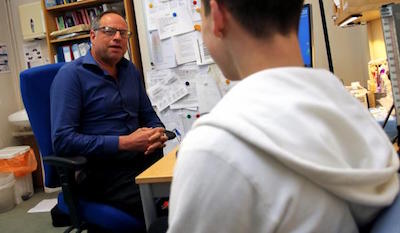
Ten Primary Health Networks (PHNs) from around the country have been chosen to pilot the federal government's Health Care Homes initiative, but healthcare groups continue to warn that the trial will fail unless proper funding is allocated.
Prime Minister Malcolm Turnbull and Health Minister Sussan Ley announced the 10 sites today, saying the government would invest nearly $120 million in the first stage of the trials, which will begin next July and last for two years. However, most of the funding is not new money and is in fact a redirection of existing funding measures.

The New Zealand Ministry of Health plans to issue a request for proposal towards the end of the year for a national oral health information system (OHIS), part of a larger program to build an electronic oral health record for children and adults receiving dental services from district health boards.
The Ministry released a request for information in April aimed at providers of clinical oral health software solutions that can support the delivery of community and hospital-based oral health services. Dental care is free for New Zealand kids until their 18th birthday, and is commonly provided through DHB-run community oral health services. DHBs also provide hospital-based dental services to children and adults.

Melbourne digital health software provider HealthKit has partnered with Data61 spin-out Coviu to integrate its WebRTC-based telehealth capability into HealthKit's cloud-based practice management system (PMS).
The new capability will allow general, specialist medical and allied health practitioners to conduct video conferences from within their PMS, as well as share clinical documents and images with patients and other healthcare providers during the video call.
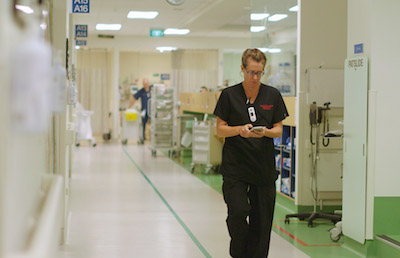
The Australasian Telehealth Society (ATHS) will next month launch a new website containing an up to date listing of telehealth resources in Australia and New Zealand, as the local telehealth sector gets ready for the combined telehealth and health informatics conferences being organised in association with Health Informatics New Zealand (HiNZ).
The ATHS is holding Successes & Failures in Telehealth (SFT-16), the annual conference it organises in association with the University of Queensland’s Centre for Online Health (COH), as part of New Zealand’s largest digital health conference this year.

Port Macquarie Base Hospital on NSW's mid north coast will shortly become the first regional hospital to roll out patient-accessible Wi-Fi using the state's Health Wide Area Network (HWAN).
The service has been piloted by the Sydney Children’s Hospital Network – which includes the Children's Hospital at Westmead and the Sydney Children's Hospital at Randwick – since April, and has served more than 52,000 patients and their families.

Melbourne-based biotechnology firm CNSDose is gearing up for a commercial launch in the US of its genetically powered clinical decision support tool for antidepressant dosing, with plans for a global roll-out, including in Australia, next year.
The tool involves a genetic test for two biomarkers for how readily medications can reach the brain and a subsequent report guiding prescribers on the probable efficacy of 20 commonly prescribed antidepressants.

Hills Health Solutions has returned to profitability after a shaky first half of the financial year, winning contracts at the new Royal Adelaide Hospital and the new Northern Beaches Hospital being built in Sydney.
The healthcare division of Hills Ltd recorded a $1.4 million profit for the full 2016 financial year, having reported a $100,000 loss in the first half. The full-year figure is down from $4.1 million last year, when the company underwent an executive restructure.

Queensland-based eHealth start-up NetHealth is running a pilot program of its real-time monitoring platform integrated into leading GP desktop software MedicalDirector, allowing doctors to have a real-time view of trending vital signs from patients at home.
The Net-HealthData platform is currently being used for the management of diabetes and hypertension, although there are wider clinical applications. Patients take their blood glucose or blood pressure readings using Bluetooth and wireless-enabled devices, with the data sent directly to their GP's clinical system.
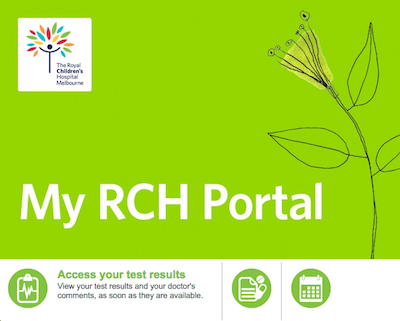
Melbourne's Royal Children's Hospital (RCH) has launched a new patient portal that will give teenaged patients and their parents and carers access to their electronic medical record (EMR) and allow them to see test results and medications, update health information and confirm appointments.
RCH went live with its $48 million Epic EMR in April this year, turning on full clinical functionality on day one. Based on Epic's MyChart technology, the new My RCH Portal is accessible through browsers and as an app for iOS and Android devices.
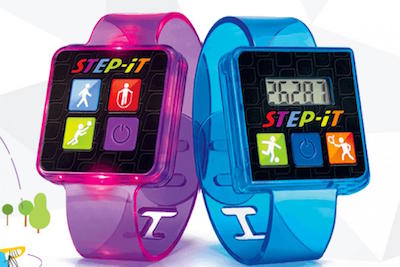
Pulse+IT's weekly round-up of international health IT and eHealth news for the week ending August 21:
Rash of complaints ends McDonald's short-lived fitness tracker Happy Meal promotion
mobiHealthNews ~ Heather Mack ~ 18/08/2016
Turns out the brightly-colored Step It! Activity Band – a wristband that could track just how much little McDonald’s customers were moving and blinked according to speed – were causing skin irritations.
Salesforce debuts telemedicine for Health Cloud
Healthcare IT News ~ Bill Siwicki ~ 18/08/2016
The new telehealth technology enables care teams to engage with patients via live video chat on Apple iOS and Android mobile devices.

With all the coverage of the issues with this year's census, you would be forgiven for thinking it was the first time Australia had tried to implement an electronic submission option. So it was surprising to me to discover that 2016 was in fact the third time the Australian Bureau of Statistics had provided citizens with the opportunity to complete an 'eCensus', as they were referred to in 2006 and 2011.
Beyond the basic and well canvassed IT issues that resulted in the electronic form being taken offline for several days, issues relating to data retention time periods and other privacy concerns overshadowed the census.
In this week's poll, we asked:
Will the census debacle affect the public’s acceptance of an opt-out My Health Record?
The results as at COB on Friday, August 19 were as follows:

Pulse+IT's weekly round-up of Australian and New Zealand health IT and eHealth news for the week ending August 20:
Australia to play role in IBM cognitive eye health project
ITNews ~ Ry Crozier ~ 19/08/2016
Researchers at IBM Australia will play a role in building a “cognitive assistant” the IT giant hopes will help ophthalmologists diagnose eye conditions from medical image data.
GP gives MyAgedCare's two-calls policy a fail
Australian Doctor ~ Antony Scholefield ~ 19/08/2016
MyAgedCare staff always ring twice, but only twice, according to a GP who says the call centre’s “two attempts” policy for contacting elderly patients is inadequate.
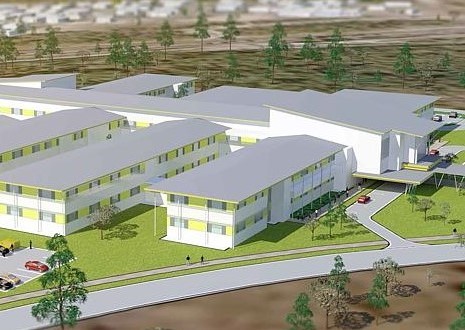
Northern Territory Health recently went to tender for a comprehensive, jurisdiction-wide, integrated clinical management system taking in acute, primary and community care as part of its massive core clinical systems renewal program (CCSRP).
The program will see the replacement of four existing clinical information systems that have been in place for more than 15 years, and is expected to go live when the new $170 million Palmerston Regional Hospital, situated on the Stuart Highway in the southern suburbs of Darwin, opens in 2018.

Health industry consulting firm HealthConsult has been appointed to develop a draft framework and implementation plan for the secondary use of data from the My Health Record system.
HealthConsult will begin a public consultation process in late August or early September, issuing a consultation paper and holding webinars and workshops for a 10-week period.

More than two million transactions involving over-the-counter (OTC) medicines containing codeine have been recorded by pharmacists using the Pharmacy Guild’s new MedsASSIST system, the Guild says.
The Guild began building and piloting the new system last year in advance of moves by the Therapeutic Goods Administration (TGA) to reschedule OTC codeine-containing medications such as painkillers and cold and flu remedies to Schedule 4, or prescription only.

The RACGP's technology business unit RACGP Oxygen has formed an alliance with Unified Healthcare Group (UHG) to support its new smart forms solution, which is now being rolled out to South Australian GPs to electronically submit work capacity certificates.
UHG, best known for the medEbridge platform it has developed for medical record retrieval and the exchange of insurance reports between healthcare providers and health insurers, has built the new smart forms technology using medEbridge to streamline the exchange of medical information from GPs to third parties.

Auckland-based health IT services provider Whānau Tahi has bought fellow Auckland firm SimplHealth, best known for developing the New Zealand ePrescription Service (NZePS) that is currently being rolled out as well as for its role in designing Australia's eRx prescription exchange.
Whānau Tahi, which bought shared care planning software specialist HSAGlobal and its Connected Care Management Solution (CCMS) last year, is the IT services arm of the Waipareira Trust urban Maori authority.

eHealth Queensland is on the hunt for its first chief digital strategy officer (CDO) who will be in charge of championing the use of digital solutions across the enterprise.
The unit is also looking for a chief customer experience officer (CCEO), also a new role that will be responsible for embedding the “customer” at the heart of strategy.

Melbourne's Eastern Health is aiming to achieve level six in the HIMSS electronic medical record adoption model by September 2017 for its flagship Box Hill Hospital as part of its long-term EMR implementation, which will also see what it calls its Great Digital Information Strategy rolled out to the smaller hospitals in the eastern suburbs health service over the next five years.
The $447.5 million redevelopment of Box Hill was completed ahead of schedule in 2014, with a new, 10-storey clinical services wing known as Building A opening that August and refurbishment of the existing hospital, known as Building B, completed late last year.

Often our most read stories relate to issues with the implementation of large hospital clinical systems. Given the sums of money involved and the effects on both clinical and administrative workflows, such projects – which typically run over many years – are always topical.
While the computerisation of medical records in general and specialist practices is far more established and receives less attention, the recent launch of several web-based clinical software offerings provides practices with an opportunity to consider how their existing software stacks up.
In this week's poll, we asked:
If you use clinical software or a hospital EMR, where do you sit on a sliding scale from not happy at all (1) to very happy (5)?
The results as at COB on Monday, August 15 were as follows:

Australia's largest telco has invested more than $235 million in its Telstra Health division since 2013 to acquire, invest in or partner with 18 health-related companies, but as expected it is reporting a loss on its new business ventures as operating expenses increase.
Reporting its full-year financial results last week, the headlines were dominated by Telstra's announcement that it will invest up to $3 billion over the next three years on digitisation and networks, including $100m for its core network to improve resilience and reliability and a further $100m investment to increase ADSL capacity to meet demand for video streaming.
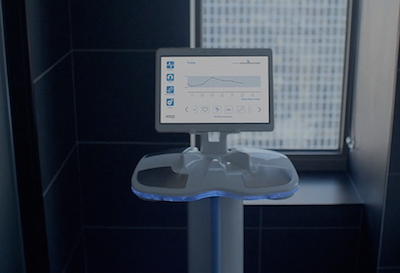
Brisbane-based medical device firm ImpediMed has launched a new population health platform called SOZO that is able to manage and monitor a person’s fluid status, body composition and hydration, aimed at both the fitness market and for use in remote patient monitoring in chronic disease.
ImpediMed, first established in 2000 as a spin-out from the University of Queensland and which listed on the ASX in 2007, already has an FDA and TGA-approved device called L-Dex on the market for use in the clinical assessment of secondary unilateral lymphoedema that is integrated with commonly used electronic medical record systems.

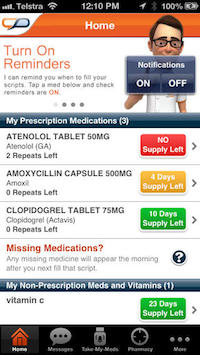
Digital medication management firm MedAdvisor has signed up patient support organisation Glaucoma Australia to its health partner network in a memorandum of understanding that will see the not-for-profit promote the MedAdvisor platform to more than 300,000 Australians estimated to have glaucoma.
MedAdvisor is a medications adherence platform that is integrated with pharmacy software and allows patients to order refills and keep track of their medication regimen on an app. It is also used for patient education and the company is planning the public launch of its GP Link program, a free tool that will allow GPs to check on their patients' medication adherence, next month.

Pulse+IT's weekly round-up of international health IT and eHealth news for the week ending August 14:
OpenNotes' benefits extend to care partners
FierceHealthcare ~ Susan D Hall ~ 08/08/2016
The ability to view doctors’ notes electronically benefits not only the patients, but their care partners as well, according to research published in the Journal of the American Medical Informatics Association.
Remote monitoring tools, EHRs have greatest potential for cost savings
Healthcare IT News ~ Jack McCarthy ~ 11/08/2016
Remote patient monitoring is the healthcare technology with the greatest impact on reducing costs to organizations and maximizing ROI, according to research by the American Society for Quality (ASQ).
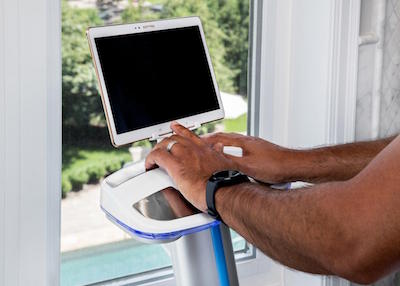
Pulse+IT's weekly round-up of Australian and New Zealand health IT and eHealth news for the week ending August 13:
This Star Trek-like body scanner could create the next big medtech company
Business Insider ~ Chris Pash ~ 12/08/2016
ImpediMed has just announced a device with the potential to make it Australia’s next big medtech company.
Government to release modelling behind ACFI cuts
Australian Ageing Agenda ~ Natasha Egan ~ 12/08/2016
The government has confirmed it will share “key parameters behind the modelling” of the $1.2 billion cuts to aged care funding announced in the 2016 Budget with stakeholders.
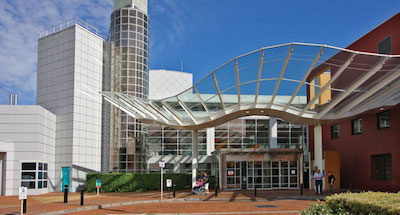
The roll-out of the first phase of an electronic medications management system at the Children's Hospital at Westmead in Sydney is complete, and work is now proceeding on introducing a patient portal as part of the Sydney Children's Hospitals Network's (SCHN) Memory strategy.
The Children's Hospital at Westmead (CHW) first went live with the Cerner system in April in what is understood to be the first implementation of EMM at a specialist paediatric hospital in Australia.

Telstra Health has begun work on the 'discovery' phase in the development of the National Cancer Screening Register (NCSR) and is on track to be up and running for the national bowel cancer screening program from March 20 next year, although federal legislation allowing for register operation and data migration from existing state-based registers still needs to be passed by the federal government.
The build is being led by Telstra Health's head of integrated solutions, pathologist Ruth Salom, with the medical record and integration aspects led by Telstra Health's wholly owned subsidiary Emerging Systems, which has vast experience in dealing with sensitive patient data through the use of its clinical information system in hospitals around the country, including St Vincent's in Sydney.

Medibank Health Solutions, the health management and telehealth services arm of privatised health insurer Medibank Private, is set to be sold off, according to the Australian Financial Review.
The AFR reports that Deloitte Corporate Finance will manage the sale of the division, which it says makes about $100 million in revenue annually.

ASX-listed online health services platform 1stAvailable is set to snap up the pioneering GP-developed appointment booking and transaction service OzDocsOnline for $150,000.
OzDocsOnline, which is currently used by about 800 GPs in 140 practices around the country, was established way back in 2001 by four Sydney GPs – Veronique Lajoie and Charles Ovadia, who still work at the Leichhardt General Practice, and Linda Mann and Dianne Chambers from Your Doctors, also in Leichhardt – as a way to virtualise their practice and reduce waiting times for patients.
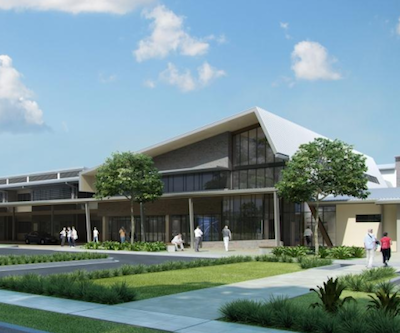
Former NEHTA staffer Bettina McMahon has won the plum role of executive general manager for government and industry collaboration and adoption at the new Australian Digital Health Agency (ADHA), where she will be in charge of a large range of critical services, including the big job of repairing relationships with a somewhat cynical software vendor community.
Ms McMahon, who acted as CEO of NEHTA for several months earlier this year as it transitioned to the new agency, was previously head of risk and assurance and head of policy and information services. Her new role will also include government, jurisdictions and industry relations, education and adoption, and interoperability and technology standards.

Victoria's Western Health has signed a five-year, $2.35 million memorandum of understanding with Alcidion Group to use the company's technology across its three acute public hospitals – Western Hospital at Footscray, Sunshine Hospital and Williamstown Hospital.
The MOU will see Western Health license Alcidion's Miya platform and key applications including Miya ED, its missed results tracker, its patient flow application Miya Flow and and its mobile-enabled bed management application Miya Access.

The NZ Ministry of Health has yet to sign up a permanent chief technology and digital services officer but has established a new Digital Advisory Board (DAB) to take over some of the roles of the now disbanded National Health IT Board.
The Ministry has been been looking to fill the CTO role since director-general Chai Chuah announced an executive shake-up earlier this year as part of a change in focus in the New Zealand Health Strategy.

It's a tough job for anyone to take up the reins at a new government agency and smooth over the ruffled feathers and lingering cynicism of the past few years in Australia eHealth so perhaps it's a blessing for new Australian Digital Health Agency (ADHA) CEO Tim Kelsey that not many people are aware of his existence.
Mr Kelsey was appointed to the top job at the ADHA just over a week ago in what came as a surprise move on behalf of the agency's board, nominating not just a newcomer to the country but one with a bit of baggage. Mr Kelsey is set to take up the high-profile role guiding the My Health Record program forward some time next week.
We asked readers whether they thought Mr Kelsey would have much ability to positively influence the roll-out of eHealth initiatives in Australia as ADHA head.
In this week's poll, we asked:
Do you think new ADHA CEO Tim Kelsey will be able to positively influence the roll-out of eHealth initiatives?
The results as at COB on Monday, August 8 were as follows:
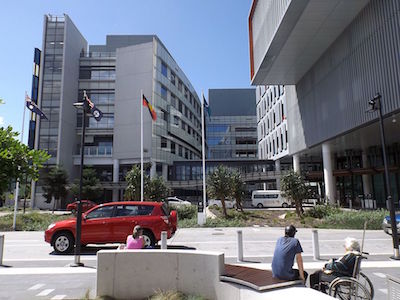
With integrated care programs revolving around a GP-led medical home and hospital admission risk stratification tools starting to take off around the country, the Gold Coast has also got in on the act and is now working with more than 1300 patients at high risk of readmission to keep them out of hospital.
So far, the program has seen more than 30,000 event summaries uploaded to a shared care record based on local firm Extensia's RecordPoint technology, which is accessible by GPs and hospital specialists through their clinical software and provides full access to the patients as well. Extensia is also currently working with the Queensland Ambulance Service to develop an app that will provide paramedics with relevant information about the patient and the record is open to any health professional who the patient nominates.

Hamilton-based practice management software vendor Best Practice has gone live with the National Enrolment Service (NES) at its first site, turning the system on for a VIP Gold practice in Hamilton, the first in the Waikato region.
Best Practice plans to roll out the functionality gradually over the next few weeks to other VIP Gold users, and also plans to have it ready when the company launches the New Zealand version of its Bp Premier application later this year.

Pulse+IT's weekly round-up of international health IT and eHealth news for the week ending August 7:
£100m pot for "digital excellence" centres
Digital Health News ~ Laura Stevens ~ 04/08/2016
Selected trusts in England are being asked to compete for access to a £100 million funding pot to become “centres of global digital excellence”.
OpenNotes reaches 10 million patients
Healthcare Informatics ~ Heather Landl ~ 05/08/2016
The OpenNotes team announced a significant milestone this week as 10 million patients nationwide have access to their physicians’ notes online.

Thursday Island-based rural generalist and associate professor of rural medicine at James Cook University Ruth Stewart is set to take up the reins as president of the Australian College of Rural and Remote Medicine (ACRRM) in October.
Dr Stewart will take over as president in October, following a two-year stint by South Australian GP-obstetrician and Flinders University professor Lucie Walters.
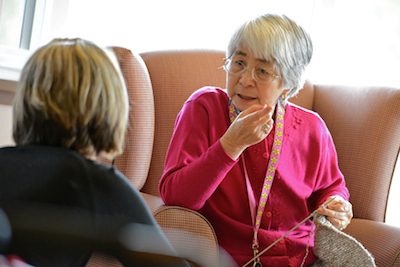
Pulse+IT's weekly round-up of Australian and New Zealand health IT and eHealth news for the week ending August 6:
More to do on e-med management in aged care
Australian Ageing Agenda ~ Rohan Elliott ~ 03/08/2016
The full benefits of electronic medication management systems in aged care are currently not available in Australia largely due to the lack of integration with electronic prescribing.
National health statistics on rural health not fit for purpose, say researchers
NZ Doctor ~ Liane Topham-Kindley ~ 05/08/2016
National health statistics on rural health are not fit for purpose with revelations several hundred thousand people accessing health services are wrongly classified as “rural” or “urban”, researchers say.

Former HealthShare NSW CEO Mike Rillstone has been appointed as a member of the New Zealand Ministry of Health's digital advisory board, which is taking over the role of the now disbanded National Health IT Board.
Mr Rillstone, who was NSW Health CIO and then CEO of HealthShare NSW, responsible at the time for health ICT, now runs his own eHealth and social services consultancy with another former NSW Health CIO, Greg Wells.

The South Australian Department for Health has settled a dispute with Melbourne software vendor Global Health over the ongoing use of the aged Chiron patient administration system (PAS) in its country hospitals, and is now doing preparatory work to decide whether to roll out its EPAS clinical and patient administration system to some of those hospitals as a replacement.
Following a court-ordered mediation session on Tuesday, SA Health has agreed to pay $5 million for a perpetual licence to use Chiron at all hospitals it is currently used in – including a retrospective payment – with a renewal fee of $600,000 each year after April 1, 2020.

There are a number of critical issues that the Australian Digital Health Agency (ADHA) and its newly appointed CEO Tim Kelsey need to face in the short term, not the least of which is the definition of 'meaningful use' of the My Health Record and the need to repair many of the fraught relationships spilling over from the days of the National E-Health Transition Authority (NEHTA), industry figures say.
The appointment of Mr Kelsey, a former director of information at the UK's National Health Service (NHS) and most recently director of strategy for Telstra Health, has come as a surprise to many in the industry considering the short time he has been in the country, although most Pulse+IT spoke to were willing to give him the benefit of the doubt for the time being.

The Australasian College of Health Informatics (ACHI) has put together what it says is the first comprehensive directory of education programs for the health information professions, listing vocational, undergraduate and postgraduate education and training programs in Australia and New Zealand.
Chair of the ACHI education committee Juanita Fernando said the college had identified that many government health authorities and health industry employers were unaware of the education options for the professions.

While post and fax are still commonly used by general practices to communicate with other healthcare providers, the proportion of practitioners using these routes to share patient records has halved in just one year, a new survey shows.
The survey also found that simple technologies such as online appointment booking services, check-in kiosks and GP telehealth services were considered to have more potential to improve patient outcomes than highly touted technologies such as the My Health Record, wearables and fitness tracking devices like Fitbits, and health-related apps.

A third of respondents to a survey of healthcare professionals working predominantly in general practice said they were planning to start using the My Health Record system in the next three months despite resentment over being “blackmailed” into taking part through the eHealth Practice Incentives Payment (ePIP) and concerns over the system's implementation.
The survey also found that the My Health Record (MyHR) and keeping up with technology were major challenges facing general practice, but this was swamped by concerns about remaining viable due to the government's Medicare rebate freeze.

Queensland Health will soon release a request for solution (RFS) for an eHealth system to support integrated care delivery in far north Queensland.
The Regional eHealth Project (ReHP) is a joint initiative between Cairns and Hinterland Hospital and Health Service (CHHHS) and Torres and Cape Hospital and Health Service (TCHHS).
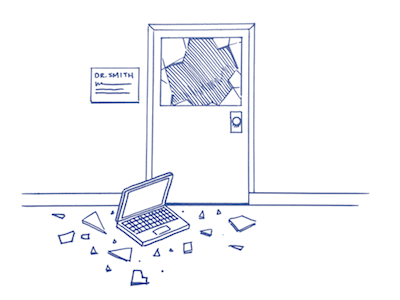
“I’ll tell you how to make documentation easier. Throw all the computers out the window.”
That tip came from an ED doctor during some recent research. I laughed it off at first, but he wasn’t joking. He went on to describe the battle that is recording patient notes.
What used to take him a minute on paper is now several painful minutes of selecting check boxes and menu items on his whiz-bang electronic health record.

Private not-for-profit Epworth Healthcare has gone live with the BOSSnet electronic medical record from Core Medical Solutions (CMS) at its new $277 million Epworth Geelong hospital, and will be able to share information with the public Barwon Health system through an innovative health information exchange.
Epworth Geelong is the eighth hospital in the Epworth group to go live with BOSSnet, which was first implemented at Epworth Eastern in 2010. It was then rolled out to Epworth's other sites including Brighton, Camberwell, Hawthorn and its flagship hospital at Richmond from 2013.

The South Australian Department of Health has been recognised for a long-term piece of work to replace five different instances of a legacy integration technology with InterSystems' Ensemble integration engine to build its Health Information Broker (HIB).
SA Health is up for an iAward next month for HIB, which is able to integrate over 200 applications across all South Australian metropolitan public hospitals and seven regional hospitals. It is based on Ensemble, which uses the same technology as InterSystems' new HealthShare health informatics platform and has been implemented by two other state health systems.

Former NHS England director of information Tim Kelsey has been appointed CEO of the new Australian Digital Health Agency (ADHA), which took over the role of the defunct National E-Health Transition Authority (NEHTA) and as system operator of the My Health Record on July 1.
Mr Kelsey, who arrived in Australia at the end of last year and began working with Telstra Health as commercial and strategy director in February, is a former journalist who helped launch the Good Hospital Guide in the late 1990s and went on to co-found the Dr Foster health analytics firm that Telstra Health bought last year.

Bendigo Health has issued a tender for an eReferral solution for the Loddon Mallee region as part of the Victorian eReferral Program, announced in the April state budget.
Bendigo Health is acting as a lead reference site for the program, which will see GPs able to create a referral from within their desktop software, select a destination and instantly deliver it electronically to a nominated healthcare provider.

Health Informatics New Zealand (HiNZ) is co-hosting a one-day symposium with New Zealand Health IT (NZHIT) focused on addressing myths about the adoption and use of cloud-based services in the country's health sector.
The Cloud in Health Symposium, being held on August 31 at Spark City in Auckland, will cover the fundamentals of the cloud in health,, cloud in practice – with examples of cloud-based services being implemented – and how to use the cloud to innovate.

Pulse+IT's weekly round-up of international health IT and eHealth news for the week ending July 31:
Doctors save two hours each shift with speech recognition software
Healthcare IT News ~ Jessica Davis ~ 29/07/2016
Chicago-based Edward-Elmhurst Health has helped its providers save up to two hours during each shift by integrating Nuance’s cloud-based Dragon Medical One speech recognition platform.
EHRs and digital health tools 'dramatically transforming' care experience, patients say
Healthcare IT News ~ Jack McCarthy ~ 29/07/2016
A new study found that patients of all ages, with Baby Boomers leading the charge, are interested in accessing medical records online and tapping into portals to book appointment, pay bills, and refill prescriptions.

Pulse+IT's weekly round-up of Australian and New Zealand health IT and eHealth news for the week ending July 30:
Health Ministry restructures as it prepares to revive flagship IT scheme
stuff.co.nz ~ Tom Pullar-Strecker ~ 28/07/2016
The Health Ministry has scrapped its advisory body on information technology issues amid comments from one hospital manager that DHBs were receiving "mixed messages" on priorities from different authorities.
Doctor 'TripAdvisor' expansion a concern, says AMA
Australian Doctor ~ AAP ~ 29/07/2016
Surgeons will avoid treating high-risk patients as a result of a rate-my-doctor website that hands power to private insurers, warns the AMA.

New Zealand's acute inpatient services have been rated an average of 2.78 in digital maturity on the HIMSS electronic medical record adoption model (EMRAM), with regional IT maturity including primary care to be assessed next year.
NZ has been undertaking a survey of the EMR maturity of its acute hospitals this year with a view to providing a benchmark on how to reach the higher levels of EMRAM, which according to the Healthcare Information and Management Systems Society's (HIMSS) analytics division, shows a strong correlation in improved productivity and quality in acute healthcare provision through better decision-making.

The NZ Ministry of Health has pulled the plug on the National Health IT Board, replacing it from next month with a new digital advisory board and leaving the future of the planned national EHR up in the air until a business case for investment can be presented to Cabinet.
Acting chief technology officer Giles Southwell told stuff.co.nz that the Health IT Board had met for the last time and would be replaced next month with a new digital advisory board. Health Minister Jonathan Coleman said in March that he would retain the Health IT Board despite the disestablishment of the National Health Board.
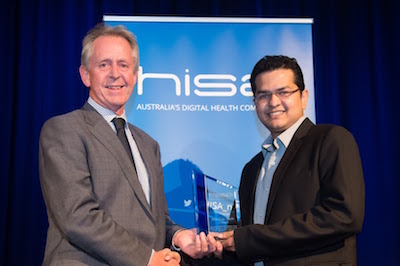
eHealth NSW is integrating its new electronic record for intensive care (eRIC) with other clinical applications such as the electronic medical record and patient administration system through an enterprise service bus (ESB), which will allow information in one system to be reflected in another through a common message model.
eHealth NSW integration analyst Min Zaw Lwin (pictured right with Holocentric's Bruce Nixon), who won the Don Walker Access Award at the Health Informatics Conference (HIC) in Melbourne this week for his presentation, said eRIC will be rolled out in one configuration to all intensive care and high dependency units in the state, meaning there will be one instance for all adult, paediatric and neonatal ICUs.
The eRIC project is using the MetaVision system from iMDsoft and is thought to be one of the largest implementations of a single ICU system in the world. Dr Lwin said it would replace the current systems used in NSW, which predominantly depend on nurses noting down data manually.

New Zealand's Southern District Health Board went live this week with the Health Connect South shared hospital records system, which will also provide hospital clinicians with a view of the HealthOne electronic shared care record for primary care.
Southern DHB chief medical officer Nigel Millar told the Health Informatics Conference (HIC 2016) in Melbourne this week that the roll out meant four of the five South Island DHBs were now hooked up to the system, which is accessible through the Orion Health clinical workstation used in each hospital.

Many people are familiar with the benefits of the cloud and whether you realise it or not, the majority of us are already using cloud services of some description, be it Gmail, Dropbox or Office 365.
While healthcare is an industry that is commonly known for resisting change, entrepreneurial products and services, first adopters and government legislation for healthcare information and data privacy are driving a change from paper-based to digital record keeping. This in turn is allowing a further transition from reliance on on-premise resources to a more collaborative environment in the cloud.
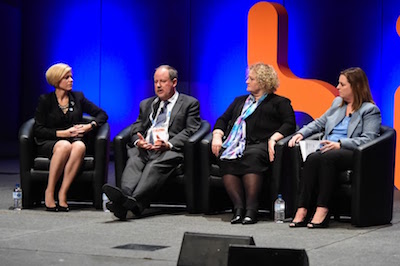
A new national digital health strategy is set to be signed off by the board of the Australian Digital Health Agency (ADHA) by November and a plan for developing standards for system interoperability and for national secure messaging is due by March, acting ADHA CEO Richard Royle said.
Addressing the Health Informatics Conference (HIC) in Melbourne yesterday, Mr Royle said if interoperability standards and the long-standing impasse over secure messaging are not solved, the health system will continue to be stuck with information silos.

Melbourne GP Network's Adam McLeod and the Victorian Department of Health and Human Services' Peter Williams picked up two of the big awards at the Health Informatics Conference (HIC) in Melbourne last night.
Mr McLeod won the Jon Hilton Award for Excellence for Primary Health Informatics and Mr Williams the HISA Distinguished Service Award, with the Joan Edgecumbe Continued Professional Development Scholarship going to Ruth Kaplan of the South Eastern Sydney Local Health District.
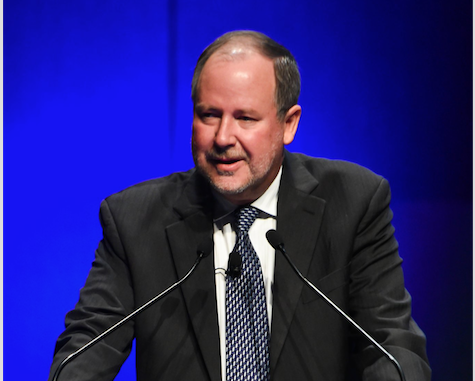
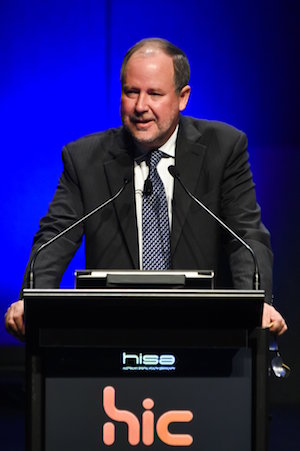
A final decision has not been made on who will take the reigns as CEO of the Australian Digital Health Agency (ADHA) but speculation is mounting that Telstra Health's Tim Kelsey has been chosen for the high-profile role.
Pulse+IT understands that Mr Kelsey, a former journalist and open data advocate who was responsible for NHS England's controversial Care.data program, has secured the job, which despite being advertised in January has yet to be permanently filled.
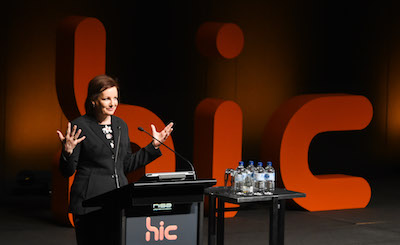
The My Health Record system is now accessible on mobile devices and will shortly reach the milestone of four million consumers registered, Health Minister Sussan Ley said.
Addressing the Health Informatics Conference (HIC) in Melbourne yesterday, Ms Ley said the platform was now mobile accessible and has enabled APIs to allow patients and health professionals to access their record anywhere at anytime.

Clinical and practice management software vendor MedicalDirector has completed a proof of concept exercise to map the system's coding standard to SNOMED CT-AU and will make Australian Medicines Terminology-mapped medications available in MD Clinical this October, the company has announced.
Responding to a recent issues paper from the Deeble Institute for Health Policy Research by researchers from the University of Sydney's Family Medical Research Centre, MedicalDirector executive director Phil Offer said the company's new cloud-based product Helix will also be mapped to SNOMED CT-AU and the AMT when it is released early next year.

The Health Informatics Society of Australia (HISA) has launched a new training initiative to provide clinicians, IT professionals and managers with online, self-paced courses in digital health, beginning with a foundation course in clinical practice in the digital age for clinicians.
The Digital Health Workforce Academy (DHWA), founded by long-time HISA member and health informatician David Rowlands, will offer three initial courses for clinicians with plans in the works for two new courses for IT professionals new to the healthcare industry to launch next month.

General practice software vendors are well on the way to mapping the coding systems used in their products to the SNOMED clinical terminology, with Best Practice having mapped many of its term sets back in 2009 and Medical Director set to release its cloud-based Helix product mapped to SNOMED CT-AU and the Australian Medicines Terminology.
Some in the industry have reacted with surprise to some of the points outlined in a recent paper from the Deeble Institute for Health Policy Research, which called for the coding systems used in general practice clinical software to be mapped to SNOMED, and to meet national accreditation standards, as a fundamental step towards standardising national primary care data in light of the defunding of the Bettering the Evaluation and Care of Health (BEACH) program.
Pulse+IT's weekly round-up of international health IT and eHealth news for the week ending July 24:
Ontario to connect LTC systems with hospital records
Canadian Healthcare Technology ~ Staff writer ~ 20/07/2016
The Ontario Long Term Care Association will be leading a project funded by Canada Health Infoway to provide Ontario long-term care homes with secure access to residents’ electronic medical information from provincial and regional data sources.
Trusts and CCGs face crack-down in 'reset' on NHS finances
Digital Health News ~ Lyn Whitfield ~ 21/07/2016
Five trusts have been put into a new ‘intervention’ special measures regime and a further 13 could follow, NHS England and NHS Improvement have announced.

Pulse+IT's weekly round-up of Australian and New Zealand health IT and eHealth news for the week ending July 23:
New ICT health research centre has aged care high on its agenda
Australian Ageing Agenda ~ Natasha Egan ~ 22/07/2016
Aged care and ageing will be a major focus of the recently launched multi-disciplinary digital health research centre at Flinders University.
Tasmania's health boss offers to retrain senior Royal staff after leaked email
ABC News ~ Staff writer ~ 22/07/2016
The head of Tasmania's new streamlined health service has offered to retrain senior managers at the Royal Hobart Hospital in response to an email leaked to the ABC.
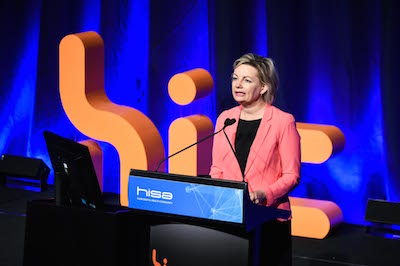
The newly created Australian Digital Health Agency (ADHA) is holding an introductory workshop at the Health Informatics Conference (HIC 2016) in Melbourne next week, featuring presentations from board chair Jim Birch, board member and Department of Health special adviser Paul Madden and acting CEO Richard Royle.
While a permanent CEO and the five executive general managers that will steer the new agency are yet to be announced – the CEO's appointment must be approved by the federal Minister for Health and her state and territory counterparts – the workshop promises to provide insights into the functions, operations and governance of the new agency. Also appearing will be acting general manager for consumer and clinician engagement Monica Trujillo, alongside board members Stephanie Newell, representing the consumer voice, and Eleanor Chew, a practising GP.
Newly reappointed Health Minister Sussan Ley will also speak at HIC, according to the organisers, the Health Informatics Society of Australia (HISA). Ms Ley also spoke at HIC 2015 in Brisbane, where she championed moving the PCEHR, now known as the My Health Record, to an opt-out system.
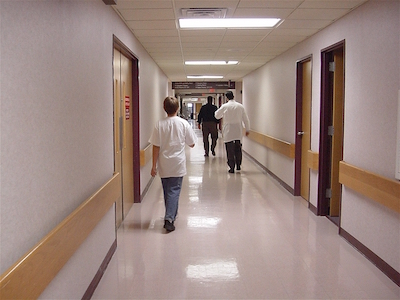
The Health Information Management Association of Australia (HIMAA) has released a 109-page report based on the outcomes of the Health Information Workforce Summit convened in Sydney last year.
Hosted in association with the Australasian College of Health Informatics (ACHI) and the Health Informatics Society of Australia (HISA), the summit tackled growing concerns about worsening shortfalls in the health information management workforce and aimed to produce a profession-led action plan to assist both the government and industry build a sustainable and skilled future health information workforce.

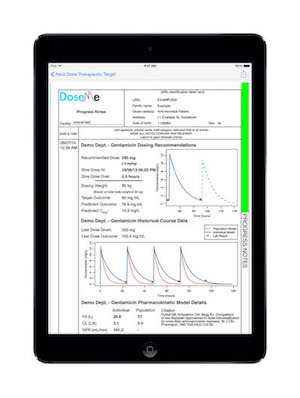
Brisbane-based software firm DoseMe is targeting both the hospital and the primary care sectors with its easy-to-use medications dose individualisation tool, which has been optimised for a range of antibiotics, anti-coagulants, chemotherapeutic agents and immunosuppressants handled by hospital pharmacies but also in the primary care setting for notoriously difficult to dose drugs like warfarin.
DoseMe is available for dosing of antibiotics such as vancomycin and gentamicin after a number of clinical trials, and is also being used for both clinical and research purposes at St Vincent's Hospital in Sydney. It is also being promoted to GPs through a partnership signed in May with Siemens Healthcare as part of the roll-out of Siemens' new Xprecia Stride point-of-care INR test device.

Whanganui District Health Board (WDHB) went live last month with a new clinical portal based on Orion Health's Concerto technology that will eventually enable the sharing of patient information in the six central region DHBs.
Part of the Regional Health Informatics Program – formerly known as the Central Region Information Systems Plan (CRISP) – the portal will allow clinicians throughout the region to access patient information even if they are admitted to another hospital in another DHB.
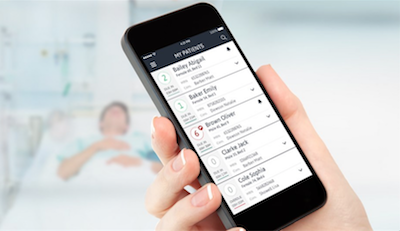
Critical care solution specialist iMDsoft will demonstrate its new MetaVision SafeTrack 'track and trigger' electronic observations solution at the Health Informatics Conference (HIC) in Melbourne next week.
Launched in October last year, SafeTrack is designed to detect patient deterioration by collecting vital signs and nursing observations at the bedside and automatically calculating early warning scores, with alarms escalated to relevant clinicians.
It can be included as part of the MetaVision clinical information system or as a standalone product. MetaVision is currently being rolled out to all intensive care and high dependency units in NSW public hospitals as part of eHealth NSW's electronic record for intensive care (eRIC) program.

The rise of health-related technology solutions is correctly perceived by healthcare professionals as a revolution that will ultimately drive improvement in patient care and increase practice efficiency.
This efficiency improvement allows providers to take on more patients and increase profits. It seems like a win-win situation for patients and providers but unfortunately there are barriers to the adoption of telehealth, telemedicine and mHealth that will take some time to overcome.

The CSIRO has appointed GP and former medical director for health insurer Bupa Rob Grenfell as its new director of health and biosecurity.
The health and biosecurity group spans public health, animal health, environmental health and biosecurity, and takes in the organisation's expertise in eHealth, biomedical manufacturing, nutrition and its 'One Health' strategy, which links human, animal and environmental health.

Sydney-based financial management platform Surgical Partners will use the $40,000 prize money it has won through the Westpac Innovation Challenge to hire new staff and explore new partnerships for its technology, which can seamlessly integrate practice management software data with online accounting programs such as Xero and MYOB.
Surgical Partners was last night named as the winner of the challenge from a shortlist of five healthcare technology start-ups. The people's choice award went to Brontech, which is developing an interoperability platform for healthcare data sharing and identity management called Cyph MD, using the blockchain concept.

Publicly listed digital medication management firm MedAdvisor is gearing up for a national launch of its new GP Link program, a free tool that will allow GPs to check on their patients' medication adherence.
GP Link has been in a pilot phase since its soft launch in March and has been collecting data and feedback before a planned national launch, which the company says will now take place in September.
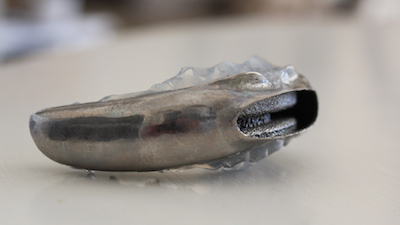
Brisbane-based medical device firm Oventus Medical has successfully listed on the stock exchange and raised $12 million towards the commercialisation and distribution of its new sleep apnoea device, a customisable mouthguard that is 3D-printed to the exact dimensions of the patient's mouth.
Formerly known as the Oventus Clearway device and now rebranded as the O2Vent, the device has been listed with Australia's Therapeutic Goods Administration and it received clearance from the US Food and Drug Administration (FDA) in April.

Electronic medical record vendor MEDITECH Australia will launch a new web-enabled version of its emergency department and inpatient EMR software at the Health Informatics Conference (HIC) in Melbourne next week, featuring personalised displays and workflows designed by doctors and built on contemporary mobility standards so it can be accessed on any device, anywhere.
MEDITECH has flown under the radar somewhat in Australia since it first arrived just over 10 years ago, but according to MEDITECH Australia business development manager Matthew McBride, the company plans to market itself more aggressively to both the public and private hospital sectors with the new web version.
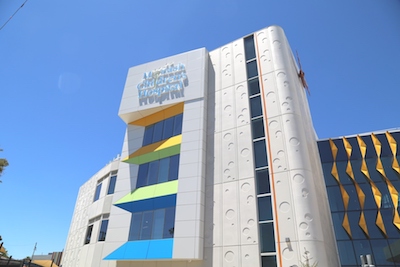
Monash Health will roll out Elsevier's cloud-based Order Sets platform integrated into its new Cerner electronic medical record, the foundations of which are due to go live to coincide with the opening of the new Monash Children's Hospital early next year.
Monash Health was awarded $40 million from the then Victoria government's Innovation eHealth & Communications Technology Fund in 2014 to implement the first phase of an EMR, which will also include integrated electronic medications management (EMM).

Launched as the Personally Controlled Electronic Health Record (PCEHR) in July 2012, this month marks the system's fourth birthday. With ePIP measures recently introduced in an effort to boost the utilisation and relevance of the system, and opt-out trials adding an additional 971,000 records, over 3.8 million individuals now have an entry in the government-held My Health Record system.
But are Pulse+IT readers amongst them? In this week's poll, we asked:
Do you have a My Health Record (PCEHR)?
The results as at COB on Monday, July 18 were as follows:

Having been sworn back in as Health Minister at a time that more or less coincided with the commencement of the Australian Digital Health Agency, Pulse+IT took the opportunity to ask readers what they felt about Sussan Ley's continuation in the role.
In this week's poll, we asked:
Do you think the reappointment of Sussan Ley as Health Minister is good for eHealth?
The results as at COB on Monday, August 1 were as follows:

Integrating the Healthcare Enterprise (IHE) is holding a pre-conference half-day workshop this Sunday in Melbourne as an education event to inform HIC 2016 attendees about developments in interconnecting patient care devices (PCD) to electronic medical records (EMRs), both in the hospital and the home.
In the hospital setting, we will look at taking the integration of vital signs devices beyond the ICU, as well as the connection of therapeutic devices such as infusion pumps and integrated electronic medications management (EMM) systems. In the home care setting, we will look at telehealth devices, hospital in the home and the long-term monitoring and support of the elderly and people with chronic illnesses.

The next phase in the trial of the opt-out model for the My Health Record system has begun, with healthcare providers in the two trial areas now able to access records that have been set up for an extra 971,000 people.
Over 580,000 have been established in the northern Queensland trial, which is being implemented by the Northern Queensland Primary Health Network (NQPHN). NQPHN CEO Robin Moore said nine out of 10 people in the region now have a My Health Record.

Voting in the people's choice section of the 2016 Westpac Innovation Challenge closes on Tuesday, with five healthcare start-ups vying for the top prize including the team behind the GP2U telehealth service with its new SkinView concept.
GP2U founder James Freeman and CEO Sam Holt have worked together to create SkinView, which they describe as a patented, disposable device that turns any smartphone into a digital dermatoscope and microscope.

Primary care researchers have recommended that the clinical software packages used in general practice be required to meet national accreditation standards and the terminologies used in the software be mapped to the SNOMED CT-AU.
The research team has also criticised what it says is a lack of basic standards in general practice electronic health records and that the value of data extracted from EHRs using tools such as the Pen CAT tool, the Canning tool and GRHANITE is limited by what is and what is not recorded in the record.

Pulse+IT's weekly round-up of international health IT and eHealth news for the week ending July 17:
ONC certifies first open API for Stage 3 meaningful use interoperability requirements
Healthcare IT News ~ Jessica Davis ~ 13/07/2016
Carefluence OpenAPI proved to be compliant with Office of the National Coordinator criteria by using the FHIR standard. The application programming interface also can used with EHRs for open access.
One in four US adults have refilled an Rx via smartphone, but 62 percent want to
mobiHealthNews ~ Jonah Comstock ~ 14/07/2016
A new survey of 1,000 US adults from Adobe Digital Insights found that consumers, especially younger consumers, are bullish on health apps, but their enthusiasm sometimes outpaces the technology available to them.

Pulse+IT's weekly round-up of Australian and New Zealand health IT and eHealth news for the week ending July 16:
AMA revives debate on GP co-payment, criticises Coalition election strategy
ABC News ~ Eliza Borrello ~ 15/07/2016
The head of the Australian Medical Association has launched a stinging critique of the federal Government's election strategy, while suggesting it revisit the concept of a GP co-payment.
Put GP co-payment plan back on table, says AMA
Australian Doctor ~ Paul Smith ~ 15/07/2016
The AMA is calling on the Federal Government to come up with a new GP co-payment plan, saying the $2.4 billion needed to offset the Medicare freeze is not going to be found "behind a pot plant”.

The Accident Compensation Corporation (ACC) will provide $NZ100,000 towards an ongoing pilot of former New Zealander of the Year Lance O'Sullivan's iMOKO app, which enables the remote diagnosis of skin infections in schoolchildren.
Dr O'Sullivan, a GP in the far north town of Kaitaia, has been developing iMOKO for a couple of years. The app was runner-up in the active project category of the Clinicians' Challenge awarded at HiNZ last year.
Copyright © 2025 Pulse IT Communications Pty Ltd. No content published on this website can be reproduced by any person for any reason without the prior written permission of the publisher. If your organisation is featured in a Pulse+IT article you can purchase the permission to reproduce the article here.
Website Design by Get Leads AU.